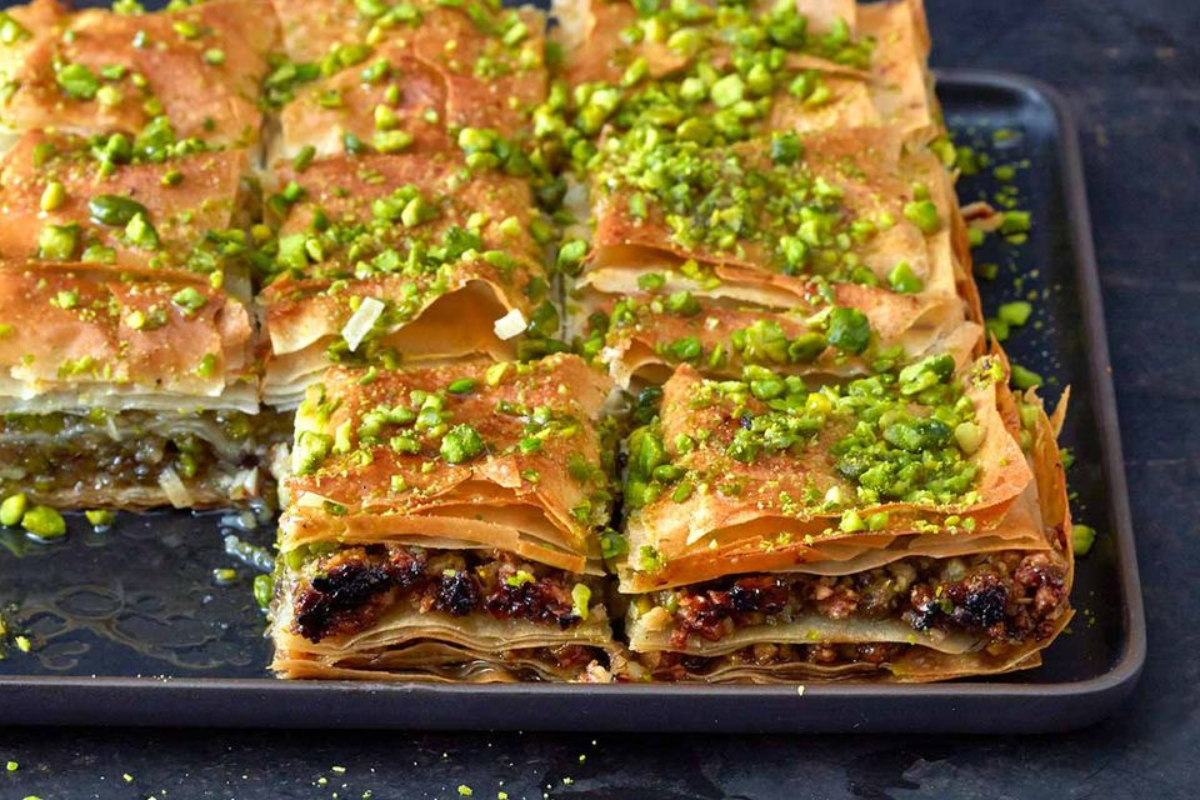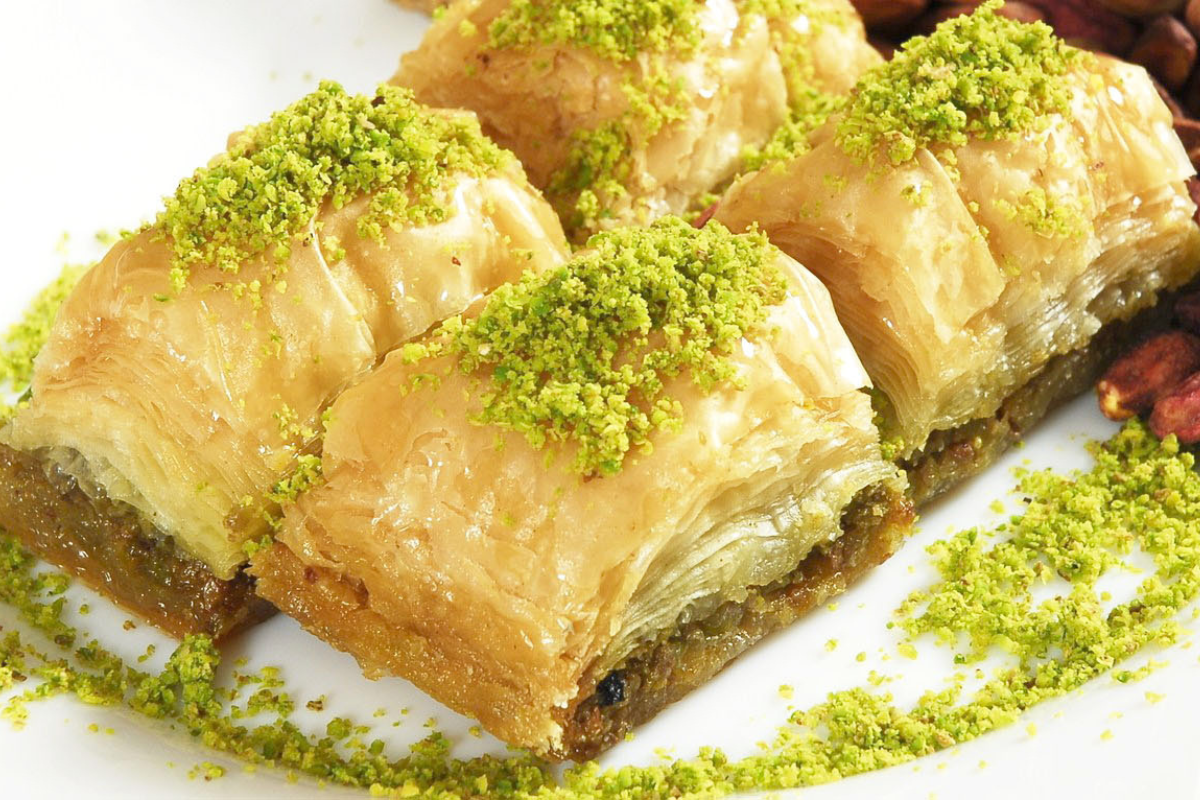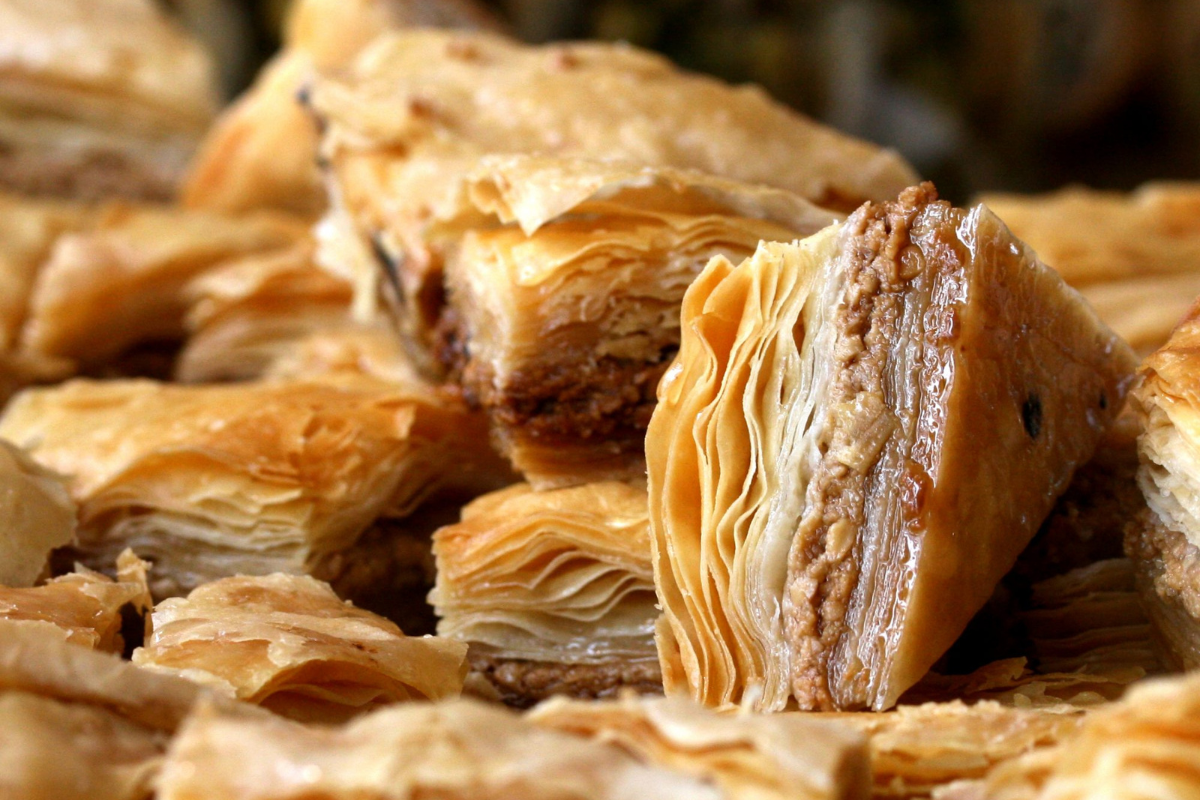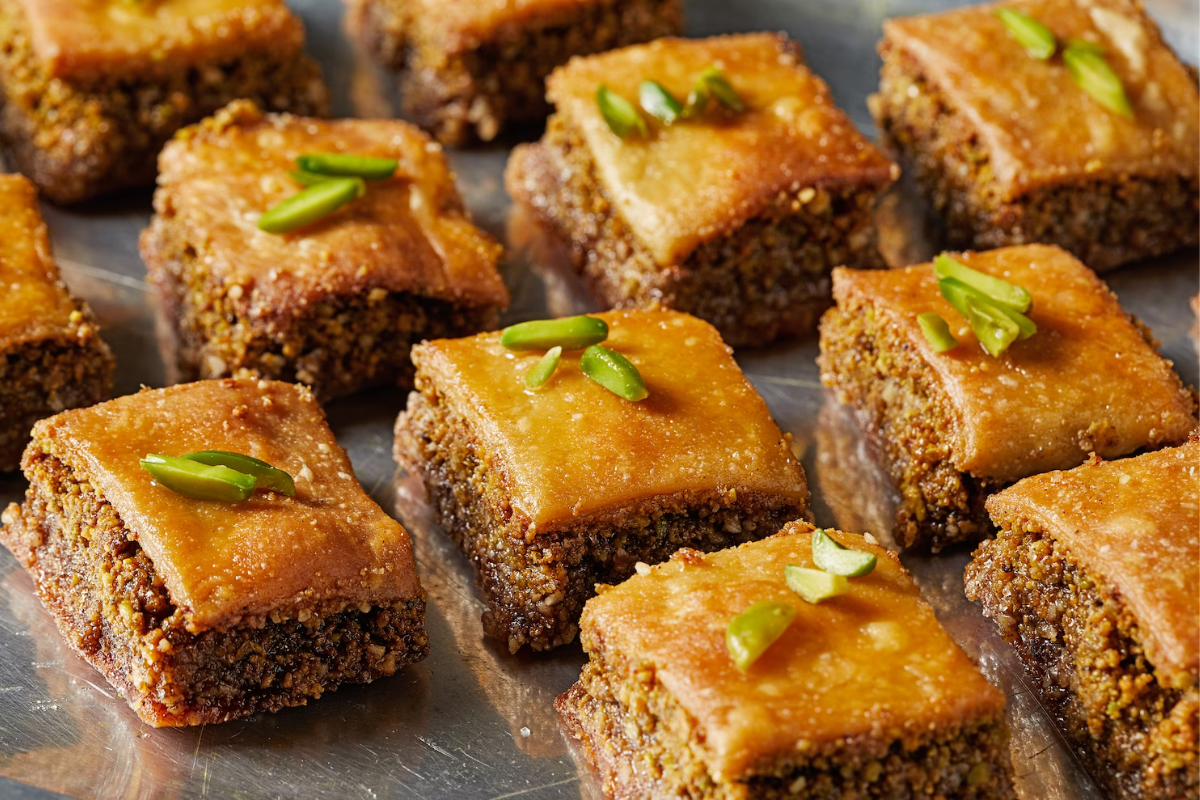Baklava, a rich and flaky pastry layered with phyllo dough, chopped nuts, and sweetened with syrup, is a decadent dessert enjoyed across the globe. Its origins weave through a tapestry of cultures, and its variations are as diverse as the regions it adorns.

Photo: Essen Und Trinken
A jewel-toned pastry shimmering with syrup, Baklava, is a decadent dessert with a rich history. The Ottomans are credited with perfecting it within the walls of their opulent palace kitchens, introducing the paper-thin phyllo dough and a symphony of spices. This layered masterpiece, filled with nuts and drenched in syrup, has become a beloved treat across the Mediterranean and the Middle East, captivating taste buds with its contrasting textures and symphony of sweet and nutty flavors. From Greece to Armenia and beyond, baklava boasts a delightful tapestry of regional variations, each a testament to the enduring allure of this culinary treasure.
The exact origin of baklava remains shrouded in mystery, with several cultures claiming its creation. One theory points to the ancient Assyrians and Babylonians, who enjoyed layered pastries filled with nuts and honey. The Greeks, who called it “baklava,” are credited with refining the recipe by incorporating phyllo dough, a paper-thin pastry introduced during the Hellenistic period.
The Roman Empire adopted baklava, and it later became a staple dessert in the Ottoman Empire. Here, baklava transcended its culinary significance, becoming intricately linked with religious ceremonies and celebrations. The Ottomans are believed to have added pistachios, a prized nut in the region, and perfected the art of layering phyllo dough for a delicate, flaky texture.

Photo: Zesty Pita
As the Ottoman Empire expanded, so did the popularity of baklava. It traveled along trade routes, finding a home in the cuisines of the Balkans, the Middle East, and North Africa. Each region embraced baklava, adapting it with local ingredients and flavors. Today, baklava is a beloved dessert in Greece, Turkey, Iran, Armenia, and many other countries.
Nuts and honey: A look at the potential health benefits in Baklava
Baklava’s undeniable indulgence comes with a health consideration. The rich combination of nuts, butter, and syrup makes for a calorie-dense treat. A single serving can easily pack in hundreds of calories, primarily from sugar and fat. However, some argue that baklava offers a few potential health benefits, making it an occasional indulgence worth considering.
One redeeming quality lies in the nuts themselves. Baklava is typically packed with pistachios, walnuts, and almonds. These powerhouses are a good source of healthy fats, essential for brain function and hormone regulation. They also contribute protein, which helps with satiety and muscle building, and fiber, which aids digestion and gut health. Additionally, nuts are loaded with essential vitamins and minerals like magnesium, copper, and manganese, vital for various bodily functions.

Photo: My Recipes
Traditional baklava recipes, when using honey as a sweetener, offer a slight edge over those using refined sugar. Honey boasts some antioxidants, which can help combat cell damage. While not a magical health elixir, honey may offer some potential health benefits compared to the empty calories of refined sugar.
However, it’s important to remember that these potential benefits are easily outweighed by the high sugar and fat content of baklava. Moderation is absolutely key when enjoying this delicious dessert. A small, controlled portion allows you to savor the flavor and potentially gain a few health perks without derailing your overall dietary goals.
A tapestry of flavors: Exploring Baklava’s global variations
The beauty of baklava lies in its adaptability. While the core elements of phyllo dough, nuts, and syrup form a constant foundation, regional variations offer a delightful exploration of flavors and techniques, transforming this dessert into a captivating culinary journey.
Greece takes a lighter approach, featuring walnuts as the star nut alongside orange flower water. Their baklava boasts a lighter syrup, allowing the delicate floral notes to shine. In contrast, Turkey’s baklava is a symphony of pistachios bathed in a denser syrup. Often, a touch of rosewater adds an extra layer of floral complexity.

Photo: The Washington Post
The Arab world embraces a diverse approach to baklava, known as baklawa. Here, the nut selection expands to include cashews and pine nuts, creating a textural and flavor contrast. Additionally, warm spices like cardamom and cloves take center stage, adding a depth of aroma not typically found in other variations.
Armenia’s take on baklava, known as gata, features a thicker pastry base that provides a satisfying chew. Walnuts remain the dominant nut, often paired with the comforting warmth of cinnamon.
Beyond these regional variations, baklava’s journey extends far and wide. Central Asia boasts a unique cigar-shaped version wrapped in phyllo dough, while the Balkans offer börek, a fascinating twist featuring filo pastry filled with ricotta cheese, a savory departure from the traditional sweetness. These diverse interpretations are a testament to baklava’s enduring appeal, and its ability to adapt and inspire creativity across cultures. Each variation adds a new thread to the rich tapestry of flavors that make this dessert a global treasure.

